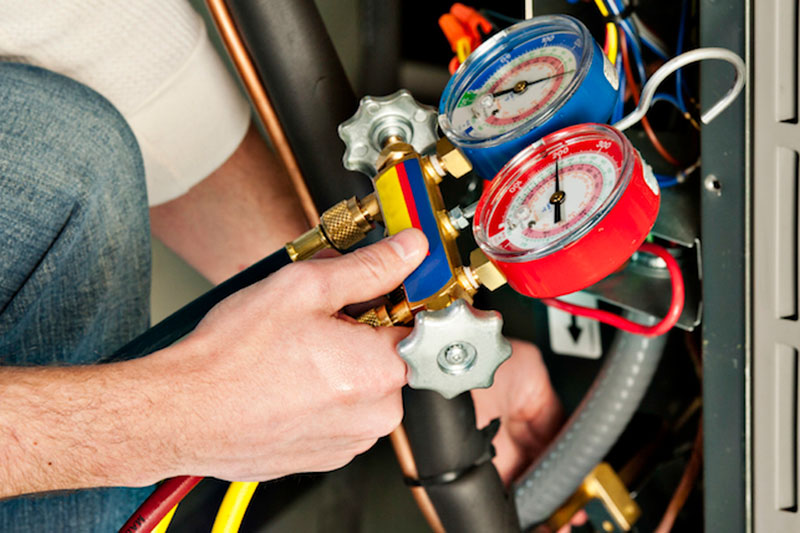
You might not think a lot about how your air conditioner functions, but it needs refrigerant to keep your residence fresh. This refrigerant is subject to environmental laws, as it contains chemicals.
Subject to when your air conditioner was added to your home, it may use R-22, R-410A or R-32 refrigerant. We’ll go over the differences and which air conditioner refrigerants are being phased out in Winnipeg, as well as how these phaseouts affect you.
What’s R-22 and Why Is It Phased Out?
If your air conditioner was added before 2010, it likely uses Freon®. You can discover if your air conditioner contains it by reaching us at 204-272-8128. You can also examine the name plate on your air conditioner condenser, which is found outside your residence. This sticker will have info on what type of refrigerant your AC has.
Freon, which is also referred to as R-22, includes chlorine. Scientists consider this chemical to be bad for the earth’s ozone layer and one that leads to global warming. The Environmental Protection Agency, which governs refrigerants in the United States, outlawed its creation and import in January 2020.
Should I Replace My R-22 Air Conditioner?
It differs. If your air conditioning is cooling fine, you can continue to run it. With yearly air conditioner maintenance, you can expect your air conditioning to last around 15–20 years. However, the Department of Energy notes that replacing a 10-year-old air conditioner could save you 20–40% on summertime cooling expenses!
If you don’t get a new air conditioner, it can create a problem if you require air conditioning repair in the future, specifically for refrigerant. Repairs could be more expensive, as only small amounts of recycled and reclaimed R-22 is accessible.
With the discontinuation of R-22, most new air conditioners now have Puron®. Also referred to as R-410A, this refrigerant was developed to keep the ozone layer healthy. As it needs an incompatible pressure level, it isn’t compatible with air conditioners that rely on R-22 for cooling.
However, Puron still has the potential to lead to global warming. As a consequence, it might also ultimately be discontinued. Although it hasn’t been communicated yet for residential air conditioners, it’s likely sometime this decade.
What Refrigerant Will Take Over R-410A?
In preparation of the phaseout, some manufacturers have begun using R-32 in new air conditioners. This refrigerant rates low for global warming likelihood—around one-third less than R-410A. And it also lowers energy consumption by around 10%, according to the Intergovernmental Panel on Climate Change’s Fourth Assessment Report. That’s savings that might be forwarded on to you through your energy costs.
Kirkfield Heating & Air Conditioning Can Assist with All Your Air Conditioning Needs
In summary, the alterations to air conditioner refrigerant probably won’t affect you a whole lot until you have to have repairs. But as we went over earlier, refrigerant-related repairs might be pricier since there are the low quantities on hand.
Not to mention, your air conditioner usually malfunctions at the worst time, typically on the warmest day when we’re receiving a lot of other requests for AC repair.
If your air conditioner uses a discontinued refrigerant or is aging, we advise upgrading to an up-to-date, energy-efficient air conditioner. This delivers a stress-free summer and can even lower your cooling bills, especially if you select an ENERGY STAR®-rated system. Plus, Kirkfield Heating & Air Conditioning provides many financing options to make your new air conditioner work with your budget. Contact us at 204-272-8128 to begin now with a free estimate.




